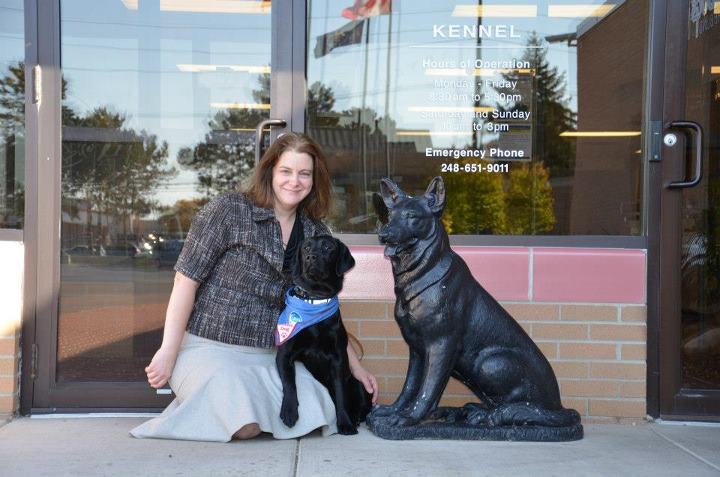Oakland Veterinary Referral Services Blog
Bringing Home Baby
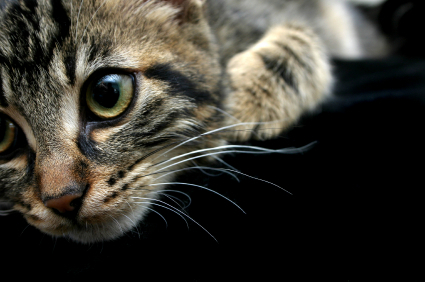 A little bit of planning can make a big difference when bringing home your new baby to live with your existing four-legged family members. At the very least our pets thrive on routine and a new baby shakes a routine to its core.
A little bit of planning can make a big difference when bringing home your new baby to live with your existing four-legged family members. At the very least our pets thrive on routine and a new baby shakes a routine to its core.
Here are some tips to help ease the adjustment for everyone in the family. Continue…
Fact or Fiction: The Truth About Allergy-Free Dogs
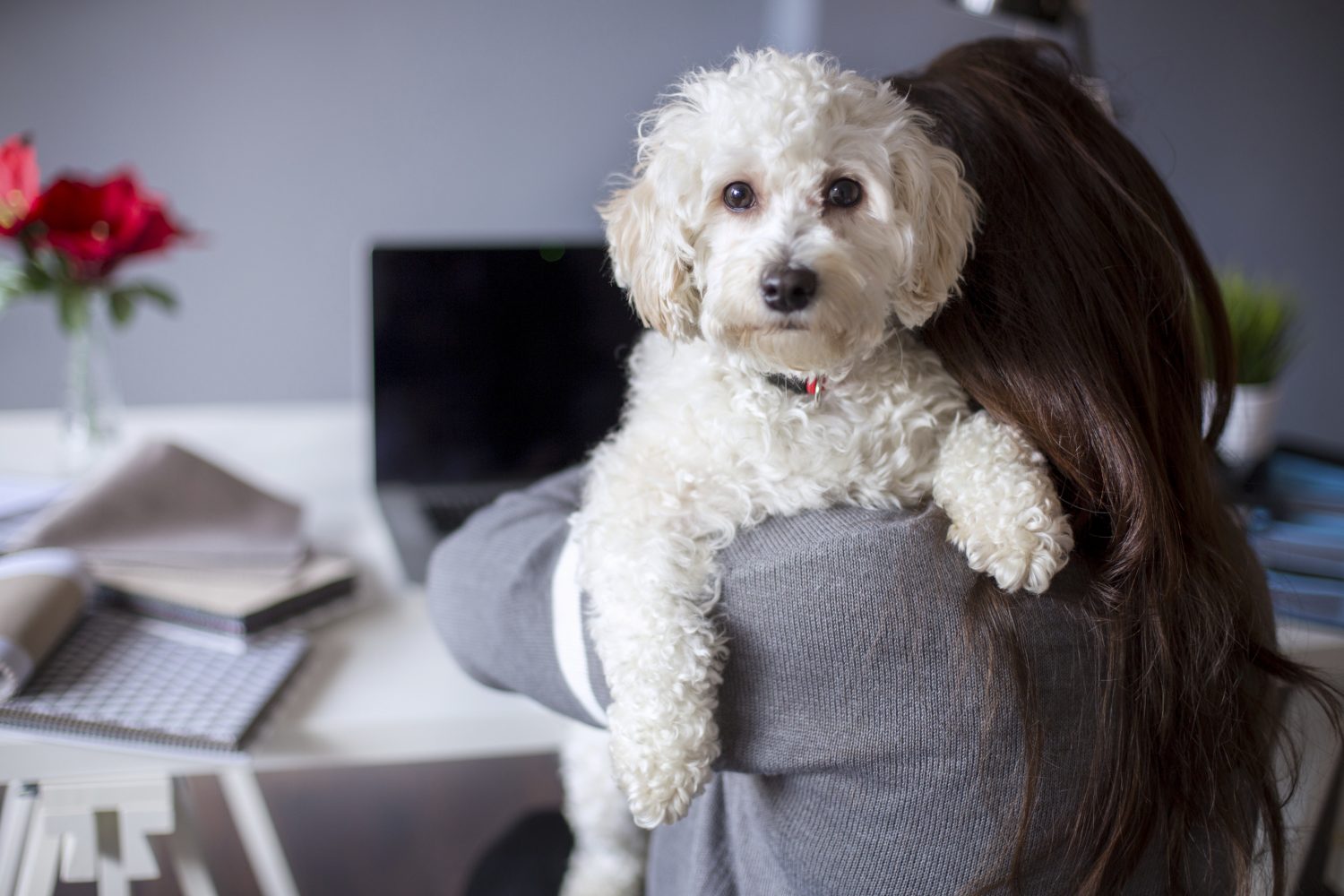 A warm or dry nose means a dog is ill. Fiction. Dogs have sweat glands between their paw pads. Fact. Your pooch’s saliva has healing properties. Fiction. You dog has three eyelids. Fact. There is such thing as a hypoallergenic dog. Fiction. Wait… what? Yes, that means your precious Poodle isn’t doing your nose any more favors than any other breed. Continue…
A warm or dry nose means a dog is ill. Fiction. Dogs have sweat glands between their paw pads. Fact. Your pooch’s saliva has healing properties. Fiction. You dog has three eyelids. Fact. There is such thing as a hypoallergenic dog. Fiction. Wait… what? Yes, that means your precious Poodle isn’t doing your nose any more favors than any other breed. Continue…
Surgery: On the Cutting Edge
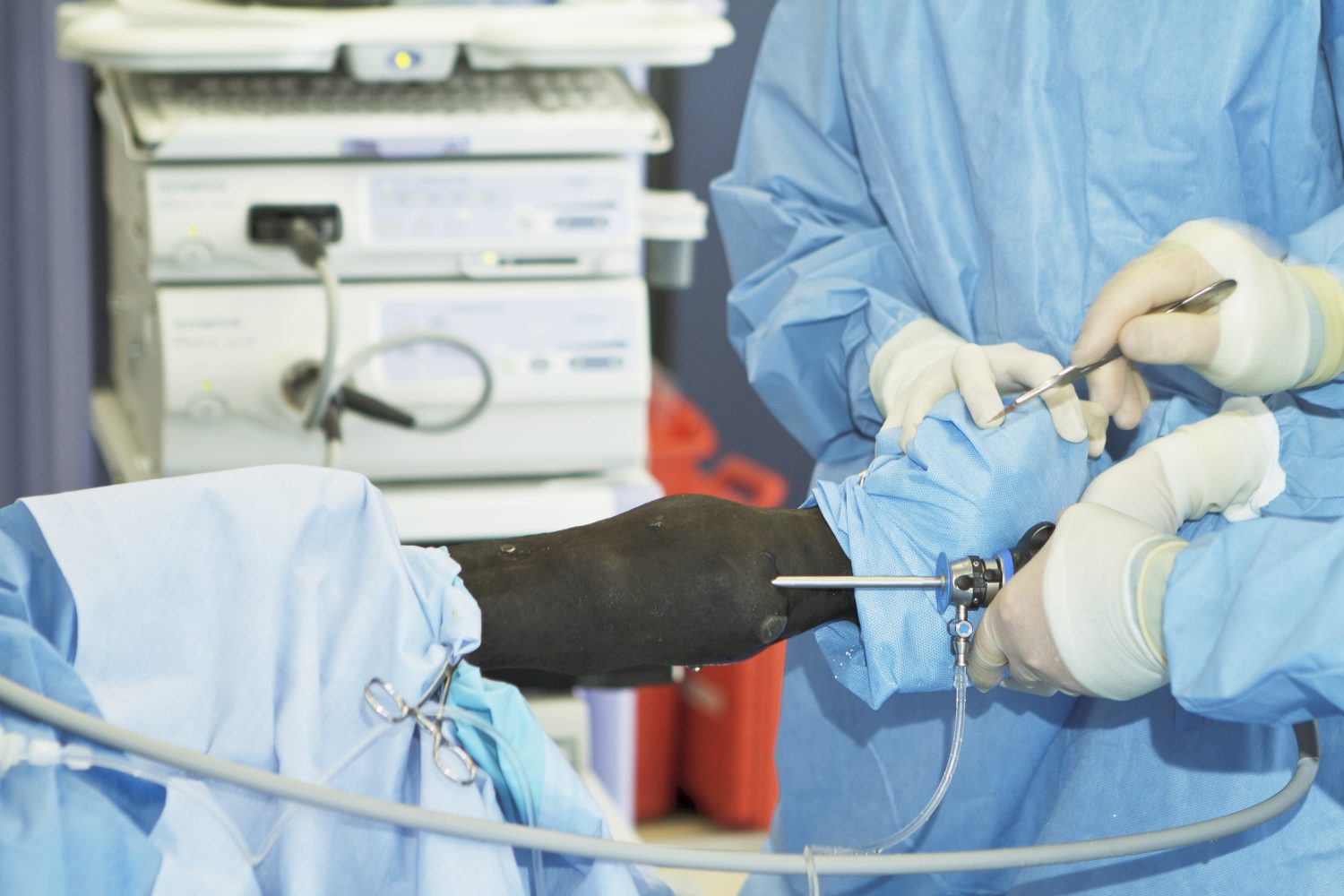 You have probably heard of laparoscopic surgery. You know, the kind of surgery where the surgeon makes an itty-bitty incision and uses a camera to perform a procedure. In human medicine, many surgeries are routinely performed like this. You may not know, however, that more and more veterinary practices are performing this type of surgery. Oakland Veterinary Referral Services is happy to be able to offer laparoscopy and arthroscopy (within the joint) techniques for a wide variety of surgical procedures.
You have probably heard of laparoscopic surgery. You know, the kind of surgery where the surgeon makes an itty-bitty incision and uses a camera to perform a procedure. In human medicine, many surgeries are routinely performed like this. You may not know, however, that more and more veterinary practices are performing this type of surgery. Oakland Veterinary Referral Services is happy to be able to offer laparoscopy and arthroscopy (within the joint) techniques for a wide variety of surgical procedures.
What does that mean for your pet?
- Smaller incisions mean less pain, less trauma, and overall less invasive surgeries. There is evidence to show that a laparoscopic procedure can reduce pain after the procedure by up to 65%!
- Improved visibility for the surgeon means an overall safer surgery and a shorter time for your pet to be under anesthesia.
- Shorter procedures and smaller incisions mean a faster recovery for your pet, with many being able to be discharged from the hospital on the same day as the procedure!
- Studies show that pets are 70% more active in the first 3 days following surgery when a procedure is performed laparoscopically vs. traditionally.
- No plastic cone! Those big, awkward plastic cones that are so uncomfortable for your pet aren’t necessary after laparoscopic surgery.
With all of these benefits, laparoscopic surgery is being recommended to make surgery easier for both pets and their owners.
What types of surgeries can be done laparoscopically?
Liver biopsies are the most common. Others include preventative gastropexy to prevent bloat, tube placement for nutritional support, and staging of disease. We can also explore joints in a minimally invasive, safe manner. This technique allows us to help you make the best decisions possible for your pet by gathering information in the least traumatizing way possible.
Contact us today to find out more about laparascopy or the types of procedures that can be completed in this way. Your pet will thank you!
New Year’s Resolutions: Tackling Pet Obesity
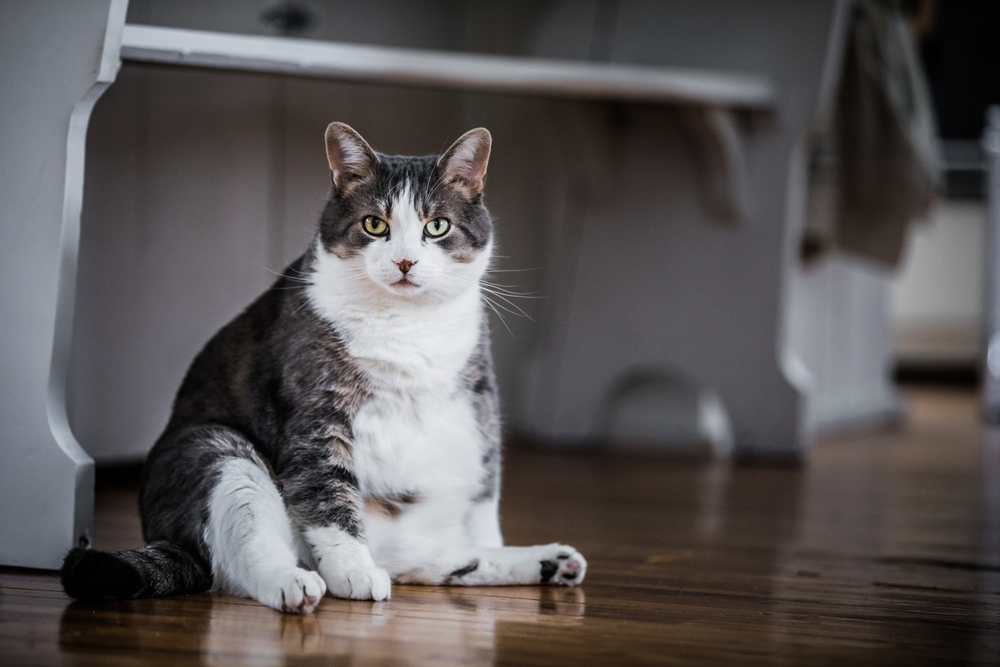 This time of year, many of us are thinking of our New Year’s Resolutions. Maybe you are going to quit smoking, make a commitment to hit the gym more often, or spend more time with your kids. New Year’s Resolutions aren’t just for people, though. Your pet may have some life changes to make as well!
This time of year, many of us are thinking of our New Year’s Resolutions. Maybe you are going to quit smoking, make a commitment to hit the gym more often, or spend more time with your kids. New Year’s Resolutions aren’t just for people, though. Your pet may have some life changes to make as well!
Did you know that approximately 54% of the nation’s pet population is overweight, with the number getting larger every year? About 20% of these pets have owners who do not recognize that there is a problem. We see a lot of these pets here at Oakland Veterinary Referral Services because obese pets are at a higher risk for type 2 diabetes, high blood pressure, breathing problems, kidney disease, exacerbation of osteoarthritis, and a shortened life expectancy. Many pet owners are either not aware of these health risks, or they find their pudgy pets cute and don’t address the problem.
Here is a different way to think about your pet’s weight according to the Association for Pet Obesity Prevention:
- A 95 pound Golden Retriever is equivalent to a 5’4” human female weighing 184 pounds or a 5’9” male weighing 214 pounds.
- A 10 pound Chihuahua is equivalent to a 5’4” human female weighing 242 pounds or a 5’9” male weighing 282 pounds.
- A Domestic Shorthair cat that weighs 15 pounds is equivalent to a 5’4” human female weighing 218 pounds or a 5’9” male weighing 254 pounds.
- A pig ear fed to a 40 pound dog is the equivalent of an adult human drinking 72 ounces of Coca-Cola.
- A regular dog biscuit fed to a 20 pound dog is similar to an adult eating 2 Keebler Elf Fudge Double Stuffed cookies.
Check out your pet’s Pet-to-Human Weight Equivalent Translator and get tips on safe weight loss in dogs and cats, at this site. It is important that you discuss your pet’s need for weight loss and your plan for accomplishing it with your veterinarian to ensure a successful outcome for your pet. Please contact us today with any questions or concerns, and have a happy, healthy 2013!
How Do I Know When My Pet Needs Emergency Care?
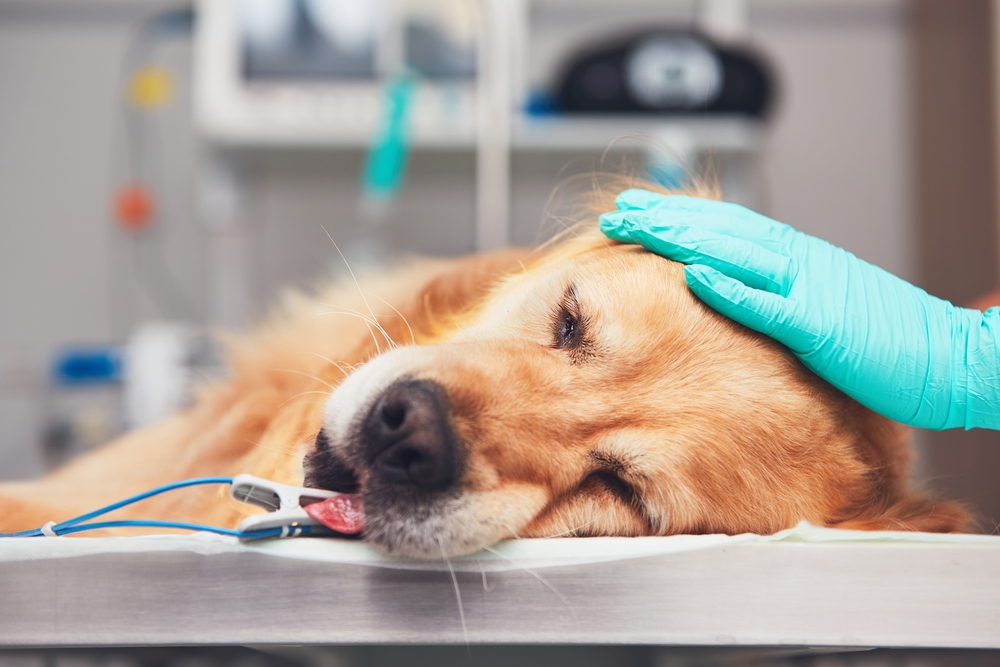 We have all been there. It is midnight on a Saturday and something is not quite right with yourself/your child/your pet. But is it urgent enough to warrant emergency services or can it wait until Monday morning? Pet emergency centers have staff on hand that can help you decide whether you need to bring your pet in and are happy to talk through the symptoms with you. If you are debating whether to phone your regular veterinarian or wait, here are handy guidelines:
We have all been there. It is midnight on a Saturday and something is not quite right with yourself/your child/your pet. But is it urgent enough to warrant emergency services or can it wait until Monday morning? Pet emergency centers have staff on hand that can help you decide whether you need to bring your pet in and are happy to talk through the symptoms with you. If you are debating whether to phone your regular veterinarian or wait, here are handy guidelines:
- Vomiting/diarrhea: If these things occur more than once or are accompanied by blood or any signs of illness such as fever, lethargy, or anorexia, it is better to have your pet checked out. Dehydration can occur quickly, especially in small or young animals.
- Wounds: Anything that is bleeding, has a discharge, or is deeper than a superficial scrape should be checked out immediately. This includes punctures and burns.
- Urine troubles: Blood in the urine or difficulty/straining to urinate is an emergency that should be addressed as soon as possible.
- Fever: A rectal temperature that is greater than 103oF warrants investigation.
- Not eating: Anorexia that persists for greater than 24 hours should not be ignored.
- Breathing problems: A pet that is panting, coughing, or otherwise seems short of breath should be looked at immediately.
- Eye troubles: Any sign of an eye problem such as squinting, tearing, or redness should not wait, as eye issues can turn serious at the drop of a hat.
- Sudden lameness: Not putting weight on a limb or a new lameness can indicate a serious problem.
- Trauma: Don’t wait after a pet is hit by a car or falls. Even if it seems fine, there may be internal injuries that don’t show up until it is too late.
- Ingestion of a foreign body or toxin: If you are not sure if it might be a problem, don’t hesitate to call and ask.
- Seizures: If it is your pet’s first seizure, it is having back-to-back seizures or seizures are lasting longer than 3 minutes, your pet should be seen.
- Trouble delivering puppies/kittens: If your pet has been in active labor for longer than an hour without progress or if it has been greater than 3 hours since the last baby was delivered, your pet may need help.
- “Just not right”: When in doubt, call. Signs of a problem can include (but are not limited to) a bloated abdomen, collapsing, weakness or lethargy, pale gums, pain, or a change in behavior.
Long story short, if your pet is experiencing a symptom on this list or you’re very concerned, don’t hesitate to call us! We are here to help you when you need it most, and are happy to answer your questions and take care of your pet whenever needed. If there is no need for immediate treatment and you can monitor the problem at home or you can wait to see your regular veterinarian, we’ll let you know that. Sometimes, though, seemingly minor problems can become serious quickly, so please contact us if you are concerned about your pet’s health. We’re here for you 24 hours a day.
Winter Weather Warnings for Your Pet
Winter has arrived, and with its entrance comes a whole new set of concerns for taking care of your pets. 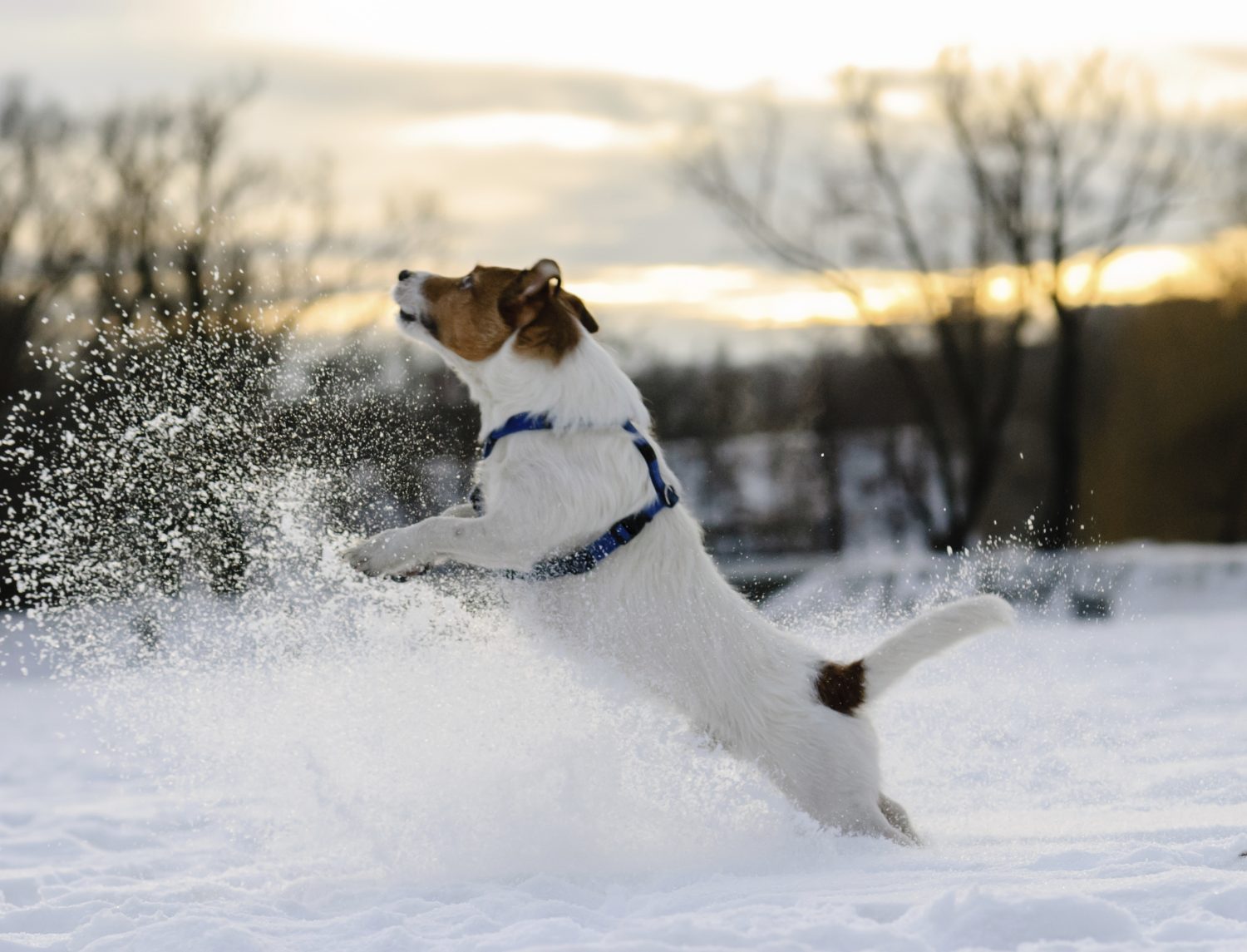 While it’s true that they wear fur coats all of the time, animals can still suffer from weather-related injury and illness.
While it’s true that they wear fur coats all of the time, animals can still suffer from weather-related injury and illness.
It’s best to keep your pet indoors during the coldest part of the year, if possible. Cats especially can freeze to death, or they are killed while trying to find warmth, such as under the hood of a car. If you do keep an animal outdoors, be sure that it has adequate shelter out of the wind and moisture. Also make sure that it has access to fresh, non-frozen water at all times. Animals that are trying to keep warm outdoors will also need extra calories to do so.
Never shave a pet that will be spending any time outdoors. Short-haired animals may even benefit from wearing a sweater or coat when outside. Very young and very old animals will have a lesser ability to keep themselves warm and should spend limited time in the cold.
Inside or out, be sure that your pet has a warm, comfy place to snuggle up. Tiled or uncarpeted areas are often chilly! Also, take care around space heaters and fireplaces, which can be a hazard for cold or curious pets.
Wipe your pet down after it comes in from the outdoors to remove any moisture or harmful chemicals, such as antifreeze, or rock salt from its coat and paws. You should pay close attention to your pet’s paws as they may become chapped or even cut on icy, uneven ground. Animals that have long hair in between their paw pads may need to have the area trimmed to prevent ice and snow from accumulating.
Overall, it is probably best to keep your pet indoors as much as possible during cold snaps. Pets can suffer frostbite and hypothermia just as people can. Long, unsupervised time outdoors increases the likelihood of these things occurring. Play it safe and keep your pet warm this winter!
Have a Happy, Safe Holiday Season!
Oakland Veterinary Referral Service wishes you and your furry family a very happy, and above all safe, holiday season this year!  Don’t forget the following during your festivities this year:
Don’t forget the following during your festivities this year:
- Dangerous objects
Christmas trees, holiday decorations, and wrapped gifts can all be dangerous items that your pet is not used to having around. Keep decorations and candles out of the reach of playful paws and wagging tails. Decorative ribbons, string, and tinsel should also be kept away from pets. Electrical cords can pose a danger as pets may chew on them or become tangled in them. Before bringing any plants into your home, be sure to check the ASPCA’s list of toxic plants to avoid problems.
- Hazardous treats
Food and goodies of all kinds abound this time of year! Beware of treats containing chocolate, raisins, grapes, macadamia nuts, and the artificial sweetener xylitol. Table scraps, particularly those that are fatty or rich, can cause stomach upset ranging from mild vomiting or diarrhea to severe pancreatitis. Don’t forget about alcohol, either. That punch or eggnog might be irresistible to your pet, but can cause serious problems upon ingestion.
- Scary situations
Pets don’t always take to the holidays like humans do. A houseful of noisy strangers can be a disturbing event for shyer animals. Make sure that they have a quiet, safe place to “hide” away from the hub-bub. It is also a good idea to make sure that all pets are wearing identification and/or are micro-chipped with your current contact information in case they slip out the door with Uncle Bob.
Ceva – Future Leader Dog for the Blind!
What’s better than a snuggly, happy puppy? A snuggly, happy puppy with a job description that includes helping others! Oakland Veterinary Referral Service’s very own Dr. Theresa DePorter has had the honor to help train a puppy named Ceva to become a Leader Dog for the blind. Ceva earned her name from Ceva Animal Health, who has sponsored her care and training.
Dr. DePorter, along with an experienced Leader Dog trainer, took on the important task of
training Ceva to be the best guide dog possible. Tremendous dedication was required as Dr. DePorter spent the first year of Ceva’s life exposing her to all sorts of situations and locations similar to what she will face on duty. This has helped Ceva to build a foundation that will allow her to be comfortable and confident for her future owner. Because a guide dog is expected to keep her owner safe in any range of situations, Dr. DePorter took Ceva many places throughout her training including restaurants, veterinary conferences, and even New York City! This taught Ceva to be very good at ignoring distractions, even tasty ones!
In October, Ceva “graduated” to Leader Dog, where she will continue her training before being placed. This is the equivalent of her heading off to college! Dr. DePorter misses Ceva, but is very proud of her. We are all excited for Ceva to continue on to help someone in need. Feel free to follow Ceva along with us on her very own Facebook page! https://www.facebook.com/cevaleaderdog
And the Eyes Have It!
Our pet’s vision is very important to them. It is a large part of what allows them to chase a tennis ball or bird-watch out the living room window. 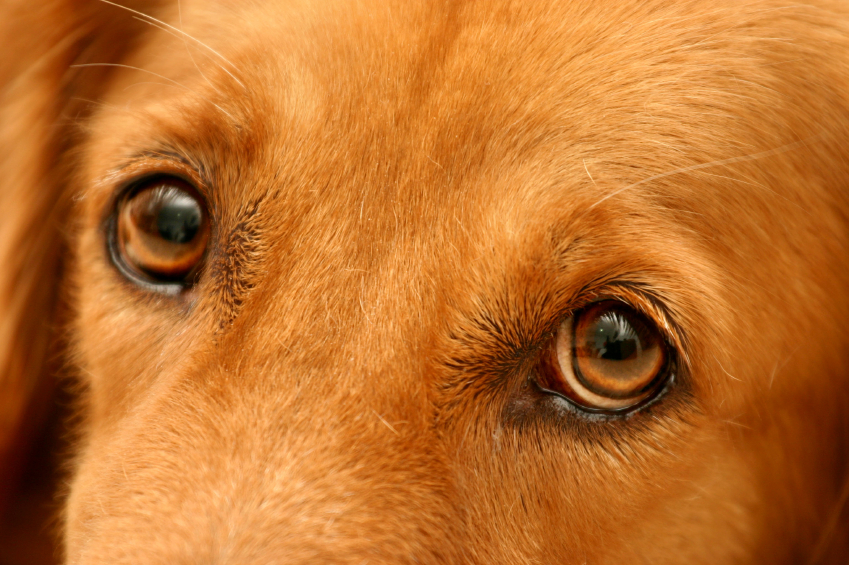 While many blind animals live happy lives, we certainly want to do everything in our power to keep our pets seeing well.
While many blind animals live happy lives, we certainly want to do everything in our power to keep our pets seeing well.
Eye problems can come on very quickly and cause serious, irreversible damage within a matter of hours. Many eye problems appear similarly in the early stages, making it difficult to know without an examination how pressing the problem is.
If you notice any of the following problems, be sure to notify your veterinarian right away. Waiting even a day or self-medicating can have serious consequences in certain situations.
- Squinting
- Pawing at or rubbing the eye
- Increased watery discharge
- Yellow or green discharge
- Uneven pupils or pupils that do not change with changes in lighting
- Change in the appearance of the eye’s surface (cornea)
- Redness around or in the eye
- Change in vision
No Bones About It This Holiday Season
Holidays and family gatherings tend to make you want to share the bounty with your pet but leftover turkey bones and other scrap bones can pose a risk for pets. 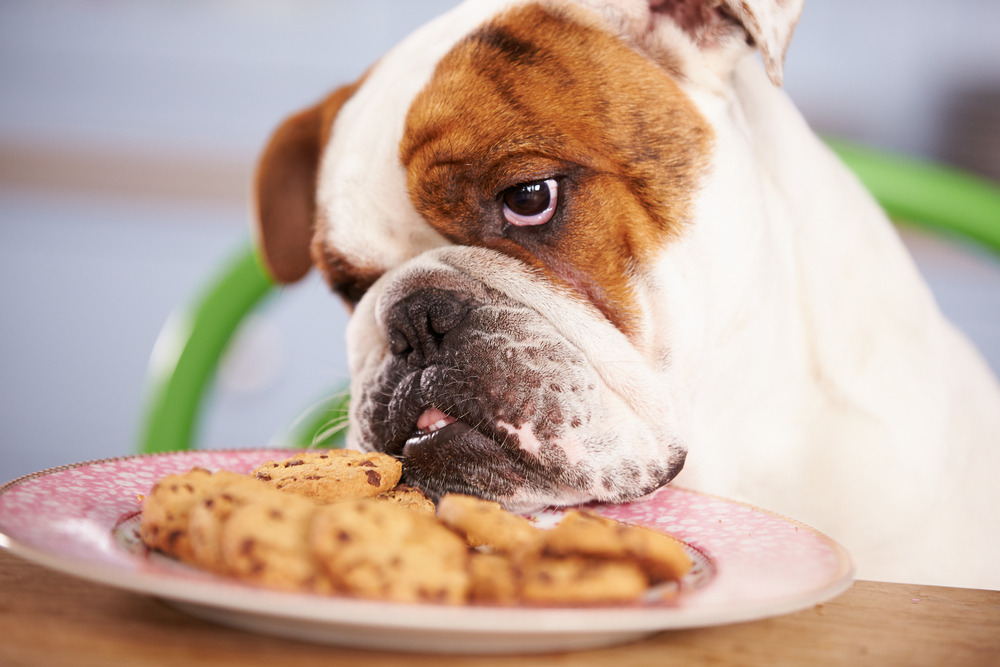 Here are a few reasons that may not be the best idea:
Here are a few reasons that may not be the best idea:
Physical injury
Sharp fragments can cause injury to the mouth and/or tongue that require a visit to the veterinarian. It is also not uncommon for pets to get a bone looped around the lower jaw, which is frightening and can require sedation to remove.
Broken teeth
Bones are hard! Broken teeth are a serious problem and can require expensive dental procedures to correct or remove.
Obstruction
There are oh-so-many places bones or bone fragments can become lodged on the way down including the esophagus, windpipe, stomach, or intestines. Even pieces of bone that are not stuck can lead to constipation due to their hard, sharp nature.
Perforation
Pieces of bone can perforate through the digestive tract, leading to leakage of the contents into the body cavities. This can lead to a serious condition called peritonitis. Peritonitis can lead to severe illness and even death.
Food poisoning
Dogs and cats are just as susceptible to threats like E.coli and Salmonella as people. Particularly if your pet helps itself to a treat out of the trash, these organisms can cause problems.
Be safe and happy
Before offering a bone to your pet this holiday season, think about the potential consequences. Also be sure to dispose of your table scraps in a manner not accessible to your animals. Enjoy a safe and Happy Thanksgiving!






